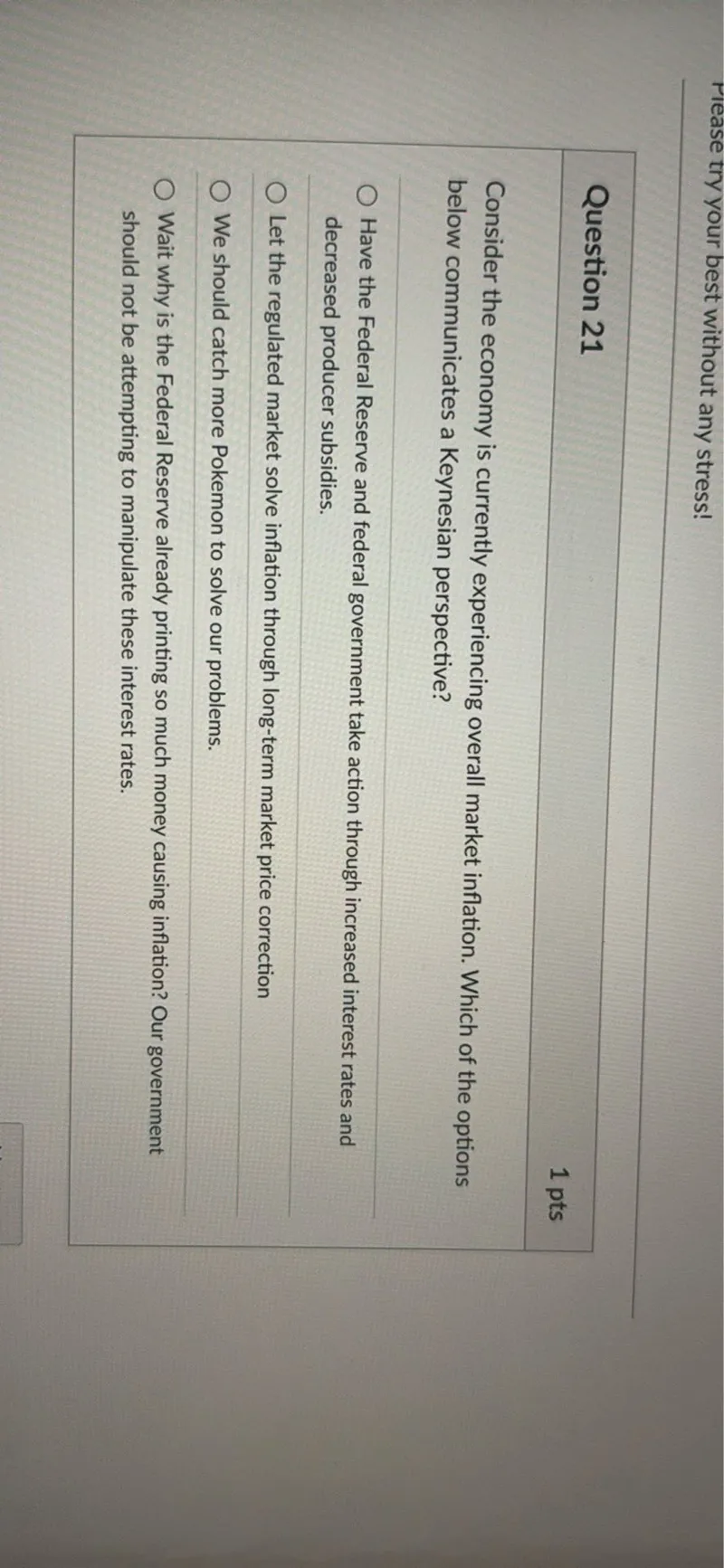Questions: Consider the economy is currently experiencing overall market inflation. Which of the options below communicates a Keynesian perspective? - Have the Federal Reserve and federal government take action through increased interest rates and decreased producer subsidies. - Let the regulated market solve inflation through long-term market price correction - We should catch more Pokemon to solve our problems. - Wait why is the Federal Reserve already printing so much money causing inflation? Our government should not be attempting to manipulate these interest rates.

Transcript text: Consider the economy is currently experiencing overall market inflation. Which of the options below communicates a Keynesian perspective?
Have the Federal Reserve and federal government take action through increased interest rates and decreased producer subsidies.
Let the regulated market solve inflation through long-term market price correction
We should catch more Pokemon to solve our problems.
Wait why is the Federal Reserve already printing so much money causing inflation? Our government should not be attempting to manipulate these interest rates.





